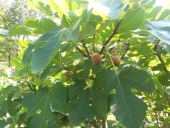




Better with Thyme - Eastern Panhandle of WV
Website: http://betterwiththyme.farm
Instagram: https://www.instagram.com/betterwiththyme/





 2
2




Idle dreamer
 2
2




 1
1




http://www.popcliq.com (web development), GoPermaculture Food Forest http://www.permies.com/t/57687/forest-garden/Permaculture-Food-Forest-suburban-permaculture, Sea Buckthorn (Seaberry) grower (hobbiest) https://www.facebook.com/michelle.bisson.37, zone 3b/4b (borderline) Quebec Canada
 3
3




"You may never know what results come of your action, but if you do nothing there will be no result”
How Permies.com Works
Be Nice




Better with Thyme - Eastern Panhandle of WV
Website: http://betterwiththyme.farm
Instagram: https://www.instagram.com/betterwiththyme/




Sarah Milcetic wrote:Craig, I knew someone on these forums would think of something I didn't think of! Thanks for the idea. I will have to learn about how to do that. If we waited until fall could I plant some apple seeds now and use those roots or would they be too little?
The apples we have are not rare. There's Granny Smith, Red Delicious, Empire and something with yellow skin. Can't remember which one right now.
The peach tree is the one I'm going to miss the most. I have so many photos of my son next to it and it quickly outgrowing him in just a couple of years LOL.
"You may never know what results come of your action, but if you do nothing there will be no result”
How Permies.com Works
Be Nice
 3
3




"The rule of no realm is mine. But all worthy things that are in peril as the world now stands, these are my care. And for my part, I shall not wholly fail in my task if anything that passes through this night can still grow fairer or bear fruit and flower again in days to come. For I too am a steward. Did you not know?" Gandolf









|
She's brilliant. She can see what can be and is not limited to what is. And she knows this tiny ad:
Support permies and give beautiful gifts to gardeners: permaculture playing cards.
https://gardener-gift.com/
|






